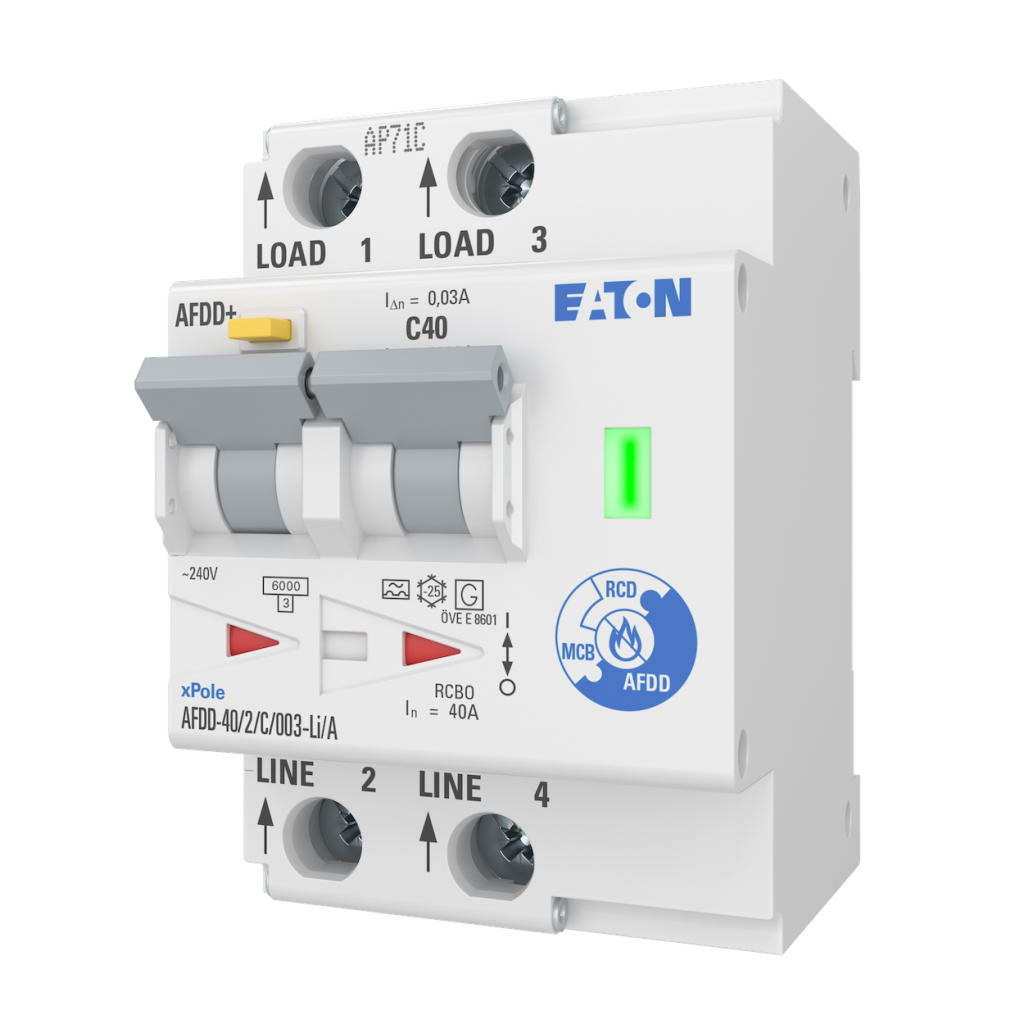In Europe, around two million fires are reported every year, with approximately 4,000 deaths and 70,000 injuries, and property damage totaling €126 billion. Around one quarter of these fires are caused by arc fault events that could be prevented if an appropriate detection device had been installed. Nevertheless, the dangers posed by electrical fires are often underestimated and hence not properly mitigated. We sat down with Alexander Jellenigg, Project Manager at Eaton, to talk about arc faults and how Eaton’s cutting-edge AFDD+ devices can help prevent them.
Alexander, why are so many fires caused by electrical faults when we have regulations and standards in place to maximize the safety of low-voltage electrical installations?
The answer is very simple. So far, we just didn’t have the technology to mitigate arcs. Since 2013, there has been a regulation and a product in place in the US, and since 2016, the same is true for Europe.
So does this mean that protection against arc faults is still not mandatory?
It actually is mandatory. In Germany, for instance, the local wiring regulations require it for places such as hospitals and daycare centers where people are not mobile enough to get out of a building in time, or for places where very high value is concentrated, museums or data centers, for example.
We know that in a number of other countries, arc fault protection systems are at least recommended, and in this respect, “recommended” is quite a strong argument because as a planner or electrician you cannot just say “it is optional, so I’m not going to install it”. You are going to have to conduct a risk assessment, and in practice there is no other way of preventing an arc than an arc fault detection device.

Could you please explain what an arc fault actually is?
An arc fault is like a tiny stroke of lightning, but while naturally occurring lightning would last only for a few microseconds, an arc fault can unfortunately go on for seconds, minutes, hours, even days, typically inside a junction box, inside a cable (a damaged cable for instance) or inside a terminal. And it can cause a lot of damage.
What are the effects of an arc fault?
An arc fault will produce a lot of heat in a very small area, and while it may not have any consequences, it can also set things on fire that you wouldn’t have expected to catch fire.
What are the causes of arc faults?
Things we do every day – pull on the cable of a device rather than on the plug, or put a piece of furniture on a cable – but also things we cannot avoid, such as animals biting into our cables or UV radiation that damages the cables.
And how can they be prevented?
We only know of one way to prevent them: an arc fault detection device. This is an electronic device that will sense the high frequency signal of an arc and switch off to mitigate the impact of the arc.

So this means that a miniature circuit breaker (MCB), a residual-current device (RCD) and an arc fault detection device (AFDD) should be installed in combination?
Absolutely. An MCB will help in case of an overcurrent or in a short-circuit current situation, while an RCD would protect people and an AFDD would sense an arc. Hence all three together are necessary to have full safety.
Could you describe Eaton’s AFDD+ for us and explain and what makes it different?
We have combined all three functionalities – those of an MCB, an RCD and an AFDD – in one single device. There are therefore no compatibility issues, and the installation requirements are minimal, which saves the installer a lot of time and is also the most convenient solution for the end user.
What is Eaton’s expertise/history in this area?
Eaton has been making protective devices for over one hundred years. We have a long history of producing both circuit breakers of every size and residual-current devices, so we know how to protect people and buildings.
Do you expect this device to become mandatory in every country?
This is an ongoing process, as the local standardization bodies transpose international standards into local regulations. But since this is a very new device, they first need to have some more experience on how the AFDD+ works in practice before adjusting the existing wiring regulations.

